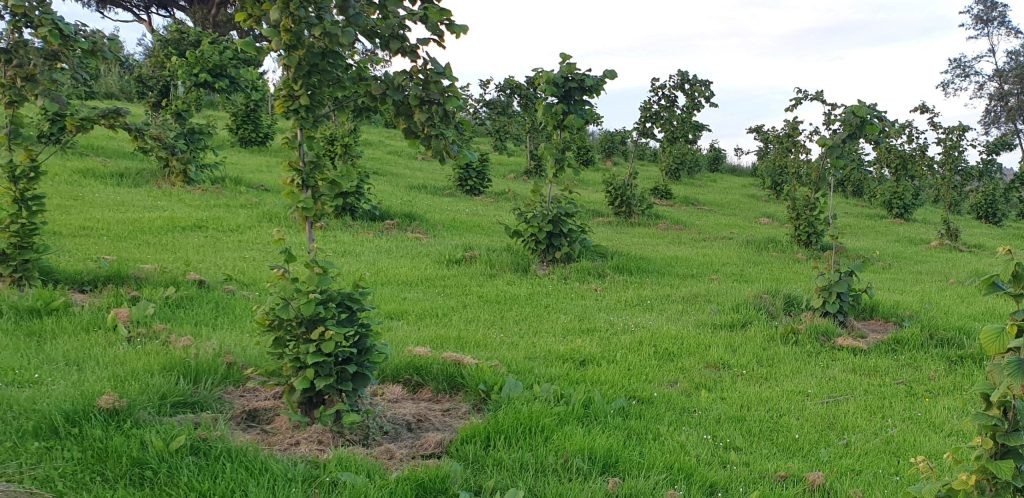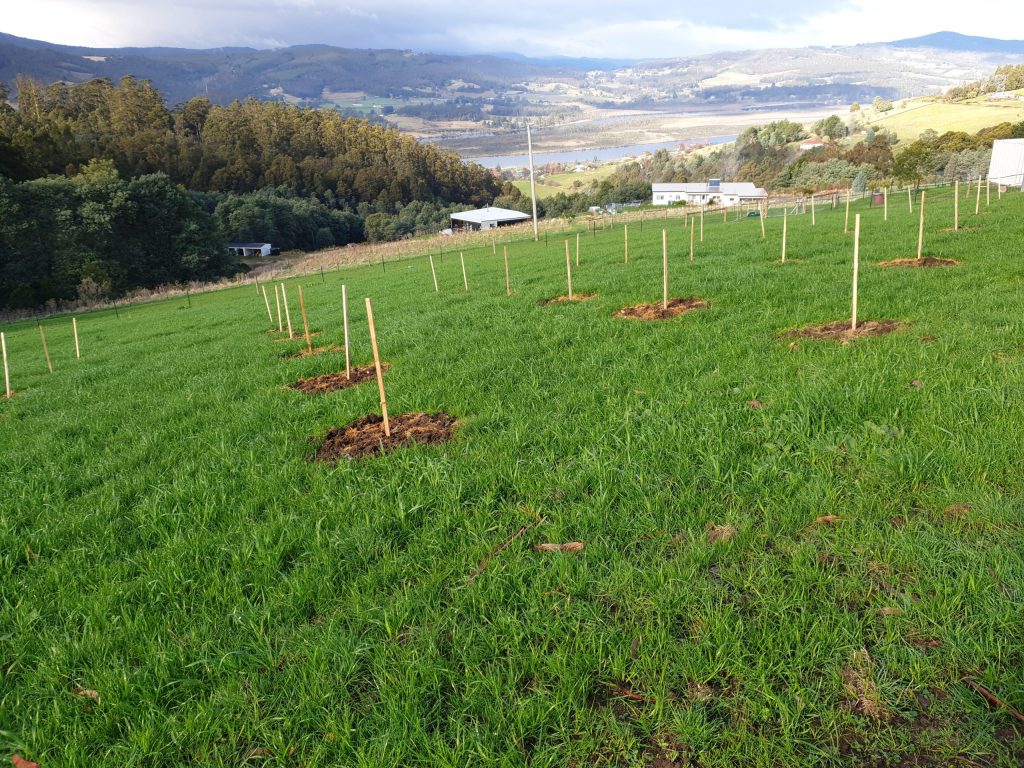Growing Hazelnuts in Southern Tasmania
Our Story
Steep learning curve!
We owe a lot to many others who have gone before us.
And we are happy to share our learning experiences for those who follow. If you are exploring the prospect of growing hazelnuts in southern Tasmania we hope Our Story helps you along the way.
Ideal Growing Environment?
We are always amused when anyone claims an ideal growing environment for any crop! It really doesn’t exist. But we are happy with the environment we have been dealt. Its not perfect or ideal but our trees are growing well and production is matching our benchmarks and budgets.
Our soils. The Huon was the source of the Apple Isle label for Tasmania. We are located on old apple orchards that have long gone. The soils are deep, high clay content but well drained. The soil is on the acidic side but not overly so – we suspect we have benefited from lime applications in the orcharding history of our land. We have sown clovers under our trees to reduce dependency on fertilisers and work hard to recycle nutrients through the orchard where practical.
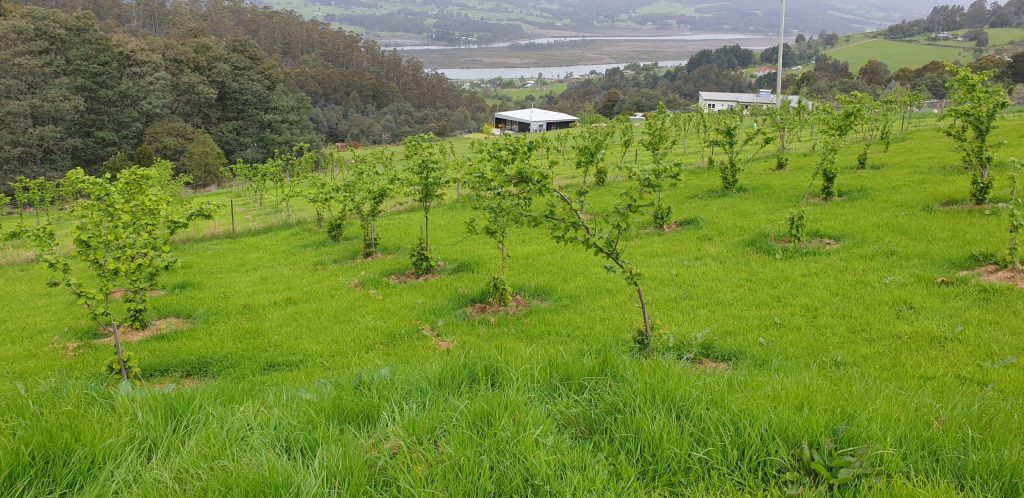
Our rainfall and climate. We are fortunate to have what is considered a high rainfall. At about 200m above sea-level and close to the South West Wilderness of Tasmania we receive about 1200mm of rainfall each year, spread out across the whole year. Despite this we occasionally encounter water stress in the trees and supplement with trickle irrigation when needed.
Our community. Retail outlets. Neighbors. Customers.
Our industry. Much of the industry literature places hazelnut growing in Tasmania in the north of the state. But we are setting out to demonstrate that hazelnuts will grow well here in the south and could be a thriving industry here.
Not all blocks in the Huon are suitable for hazelnuts. But plenty of small holdings like ours have been subdivided out of larger orchard properties. They are a tough tree but still don’t like shallow soils and water logged conditions.
Our Progress.
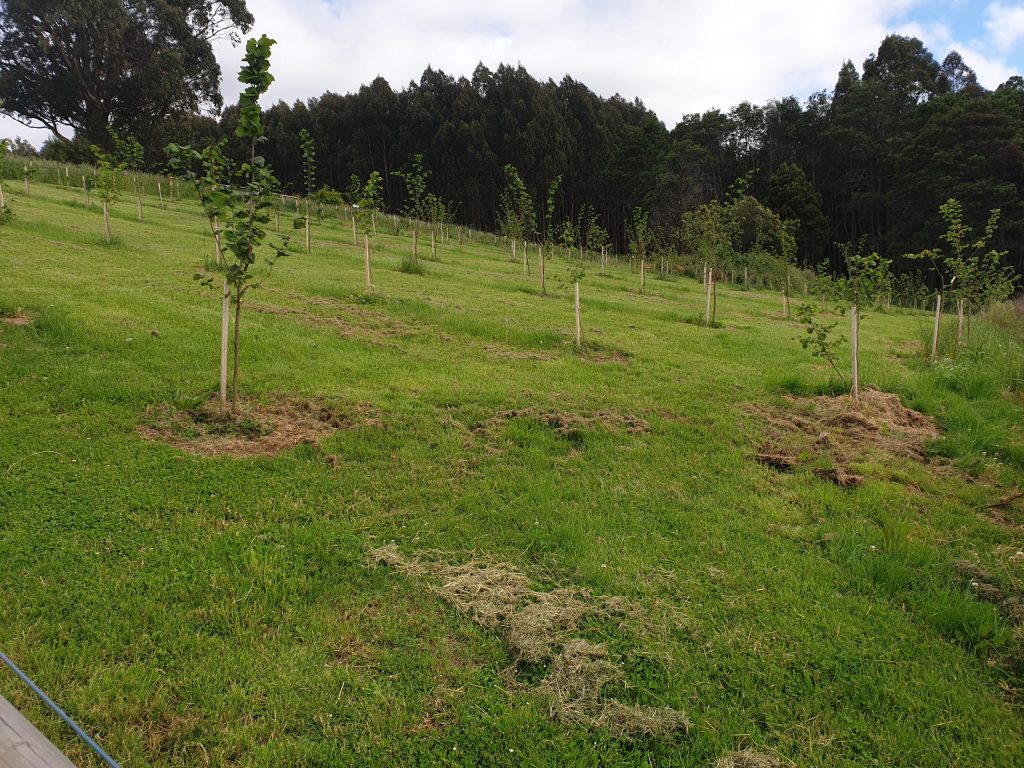
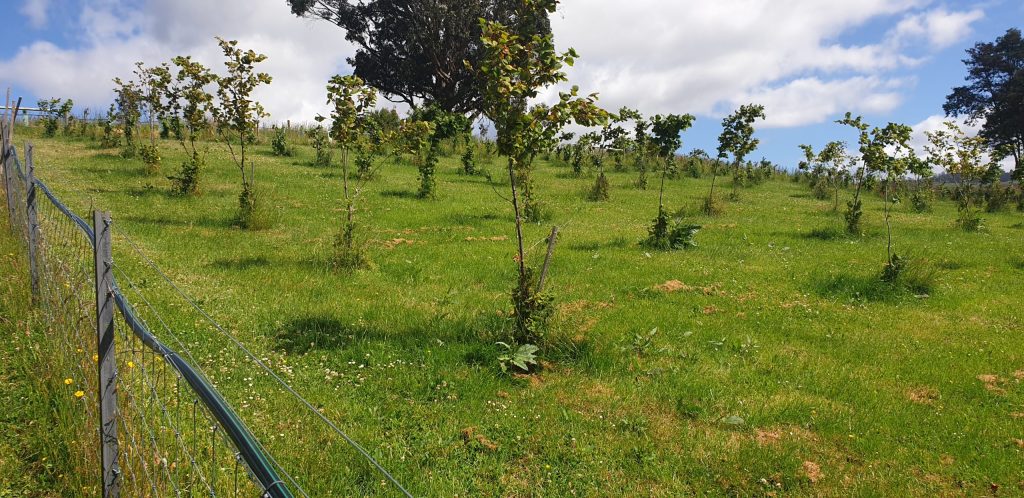
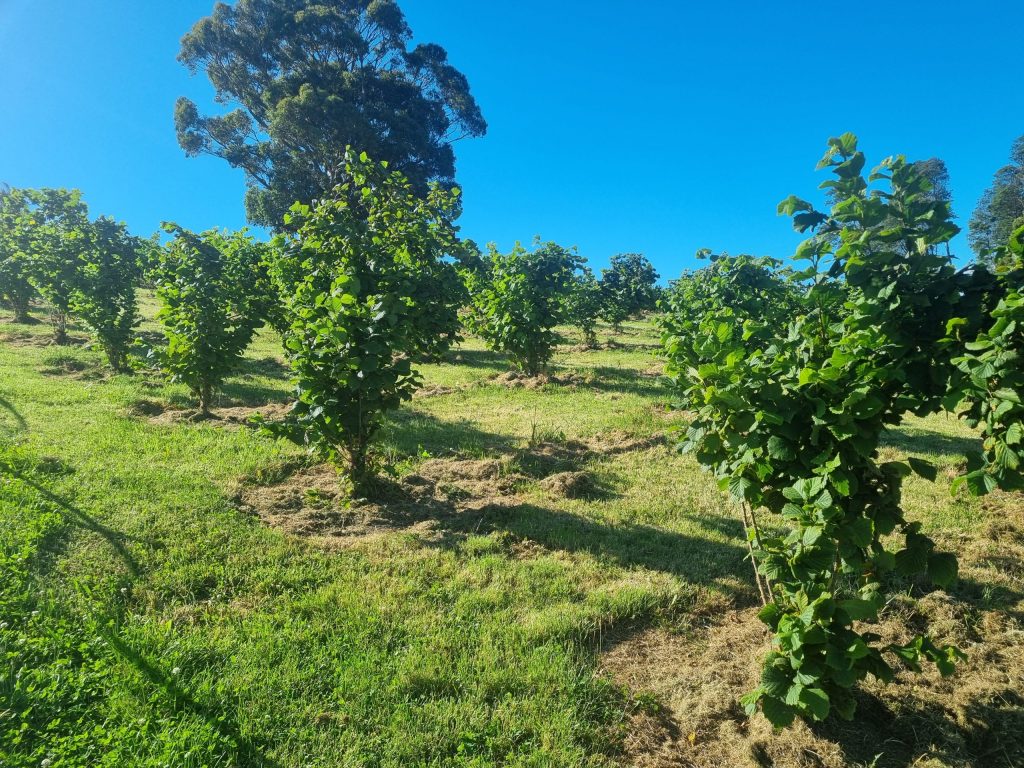
Where we sourced information.

Hazelnut Growers of NZ have a solid set of papers on their Resources page that we found very useful for understanding the growth pattern and yield profile of hazelnuts. Also useful information on tree management, harvest management and product management.

Hazelnut Growers of Australia provide useful links to Australian research and publications on hazelnut growing, particularly for new and prospective growers.

Hazelnut Growers of Oregon includes a Growers News segment with many interesting stories.
Other growers websites have helped in many ways with stories of their journeys, their marketing approach, their challenges and their successes. These have included Carboor Harvest, Hazelbrae at Hagley, Hazelnuts on Hythe, Happy Wombat Hazelnuts,
Our Growing Methodology
Growing hazelnuts in southern Tasmania has mirrored the experiences of all of the above growers elsewhere.
Variety Selection
Pollinisation
Crop yield targets
Type of nut
Growth habit of trees
Tree Husbandry
Purposely mulch under trees to help control weeds, increase soil organic matter etc
Sheep graze under trees during winter to cycle nutrients and reduce need for mowing
Tree spacing
Mechanisation
Mowing. Irrigation. Harvesting. Processing.
Sustainably Grown in Southern Tasmania
What does “Sustainably Grown” mean?
